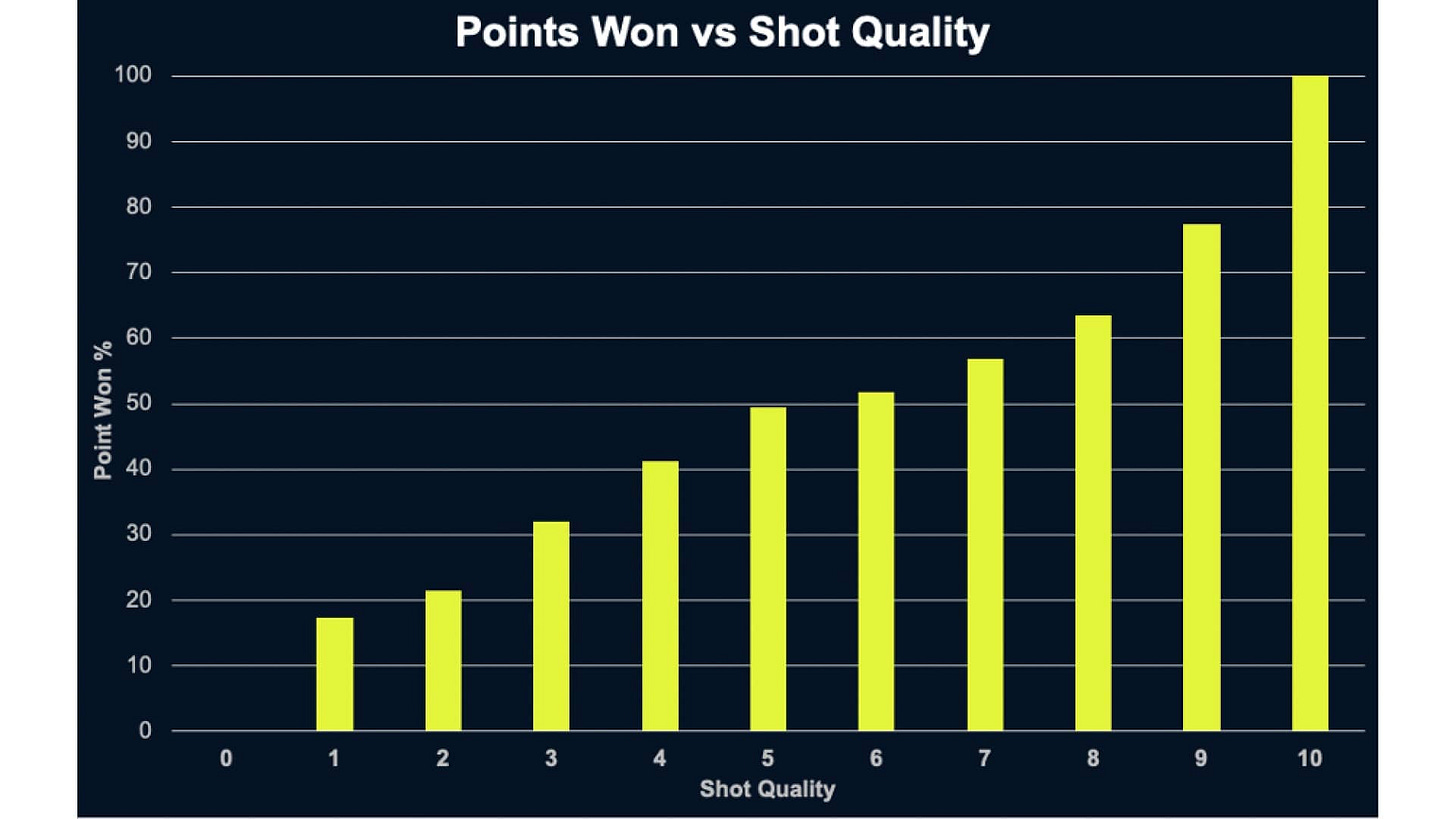The mathematics of tennis
This post shows how mathematics are involved in a lot of aspects related to tennis. Here I focus on some probabilities and statistics.
This is the second post of my blog. The first was dedicated to new developments in weather forecasting, and this one is focused on tennis, a sport I really like to follow. First section explains the relationship between winning a point and winning a game and the second section focuses on how to know if a shot is good or not.
Only some days ago Roger Federer gave a great lecture [1], regarding his tennis career and some life advice. He played 1526 matches, winning almost 80% of the matches, by winning 54% of the points. And he is one of the best tennis players in the sport’s history!
What this implies is that tennis is totally a non-linear sport, in which there is a lot of randomness and in which really small details decide if a match ends up in a win or in a loss. Therefore, consistency when losing a point or a game is a key point for having a great career. There will be sometimes a player loses a game or a set, and it can be not his or her fault, only probabilities.
A game
To explain this in mathematical language, we can compute the probability of winning a game, provided the value of the probability of winning a point [2]. As can be seen, the function curve is similar to a sigmoid, given the probability value is equal for all types of points. As an example, if the probability of winning a point is 0.3, then for a game is 0.1, then for 0.4 is 0.26, for 0.45 is 0.38, for 0.5 is 0.5, and for 0.54 (Federer’s percentage) is 0.6. Therefore, by winning 60% of the games you play on average you are one of the best tennis players in history.
The simplification used in this equation is that the probability of winning a point is the same in all points. However, there are players who improve their performance under pressure, for example, in break points or in the last games of a set. It also does not account if the match is one of the first-rounds or a final or semifinal or if the surface is hard, clay or grass.
Regarding Tie-Breaks, they are one of the most critical events of a tennis match. Only one or two few errors can lead to losing a set. A tie-break can be modelled as a game in which it is required to win seven points instead of four, also with a two-points difference, but in which the serve is changed each two points. Best tie-break players are usually best-ranked players.
Is there feedback / memory in tennis points?
Well, a bit…
Commonly there is an assumption in tennis which states that points are independent and identically distributed variables (i.i.d). In other words, the probability of winning two different points does not depend on the other and the probability density function (PDF, not the file type) is equal. However, some real life examples show that the probability of winning a point can depend on the previous one under certain conditions. This changes depending on the contour conditions as type of point or the opponent, but especially in some classical matches like Sharapova vs Williams or Djokovic vs Nadal, there can be seen sometimes a kind of counter-back effect. In other scenarios, we can find the opposite, for example, Nadal at Roland Garros some years ago.
This effect is better seen in 5-set matches in men’s tennis at Grand Slams. Many times the 3rd set is won by one player and then the 4th one is won by the rival and then the 5th one is won by the first player. It is not a big effect, but this is the reason often TV commentators say in the 2nd or 3rd set that a match will end in the 5th set.
Shot Quality
Since the last decade, a new metric called shot quality has been used to compute the performance of a player during a point. Depending on the accuracy, speed and angle, a certain shot is given a mark [3]. The higher shot quality a player gets, the bigger the probabilities he or she has to win a point. Shot quality with values from 6 to 9 do not provide a 0.6 or 0.9 probability of winning a game, they give values from 0.52 to 0.77.
This figure above (Fig. 3) confirms the formula shown in the Fig.1. There is not a linear relationship and averaging a great shot quality does not lead to the same amount of points won. Shot quality is bigger on high-level tournaments like WTA1000, ATP1000 and Grand Slams. Therefore, if two players average the same shot quality, the probability of winning a point can be computed as 0.5.
Conclusions
Tennis is a really complex sport, which can be approached from many knowledge fields, biomechanics, statistics, probability, physics or psychology. Here we have focused more on the probability and statistics aspects, covering for example, how a player which is not in the top 50 is not a bad one, he or she simply loses 51 or 52% of the points played, not more.
If you have liked reading this post, please share or subscribe! Thanks!
References
[1] 2024 Commencement Address by Roger Federer at Dartmouth (youtube.com/watch?v=pqWUuYTcG-o)
[2] MATHS POINT: Finding Tennis’ Winning Formula (chewthestat.com/finding-the-winning-formula)
[3] INSIGHTS: Shot Quality Explained (atptour.com/en/news/insights-shot-quality)






